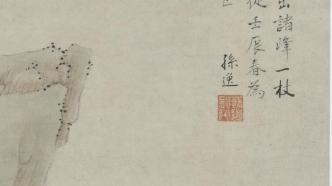
As an important member of the "Tiandu School" in the late Ming and early Qing dynasties, one of the "Four Great Masters of Xin'an", and also known as "Sun Xiao" together with Xiao Yuncong, Sun Yi was a very famous painter in the painting world at that time and had a relatively broad social influence. However, for a long time, due to the fact that very few of his works have been handed down from generation to generation and historical materials are difficult to find, it has been difficult for future generations to gain a glimpse of the true nature of his paintings, let alone the evolution of his painting style.
During the Republic of China, Huang Binhong, who had been dedicated to collecting literature on the arts and crafts of the country, once lamented that "of the four great masters in Xin'an, Sun Yi was the rarest. There were not many fine works that were circulated at that time." This article sorts out more than ten pieces (sets) under Sun Yi's name that survive in the world. The work roughly presents the changes in his painting style during about twenty years from the 11th year of Chongzhen in the Ming Dynasty (1638) to the 14th year of Shunzhi in the Qing Dynasty (1657). Combined with relevant literature, a brief outline of his life and art.
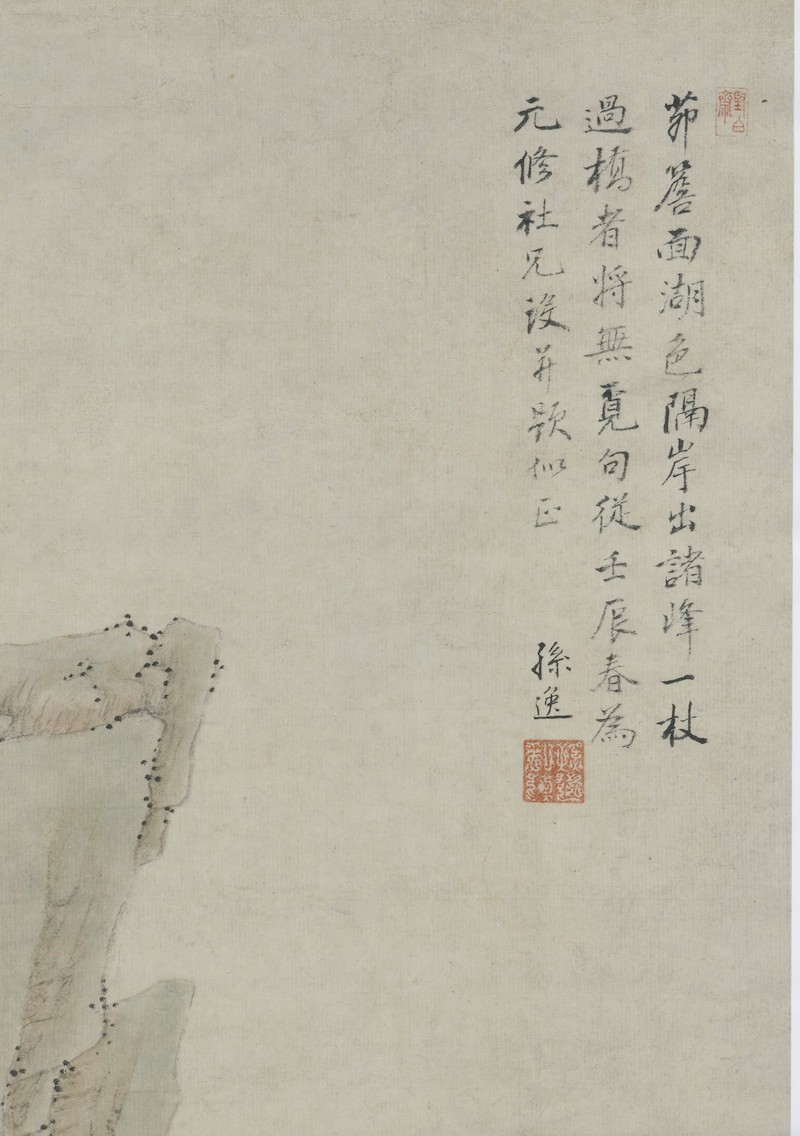
Figure 1 Part of Sun Yi's "Looking for Sentences at the Bridge" collected by Anhui Museum
Sun Yi (about 1610 years ago - about 1658), whose courtesy name was Wuyi and whose nickname was Shulin, also had the names of Jianbaizhai (upper right corner of Figure 1) and Guanyuan (lower right corner of Figure 2-1). A native of Xiuning, Anhui Province, he later lived in Wuhu and became famous for his landscape paintings.

Figure 2-1 1639 Qiu Sunyi Landscape Collection Collection of the Palace Museum
There are few historical materials about Wuyi's life and few handed down works, so it is difficult to trace his career. In his early years, he studied poetry and painting in the Xiuning area. He also learned from foreign teachers, mostly from Huangshan Mountain. According to Li Liufang (1575-1629) in his later years, he wrote one of the seven unique paintings in "Paintings for Sun Shanren". His poem said: "Every time I love the sparse forest and the distant mountains, Ni Biao's pen and ink fall into the world. Youren lived near the south of Bu City and wrote A bay of spring wind and water." This poem is listed after the two quatrains on the first day of Jiazi (1624), the fourth year of Ming Dynasty. The two should not be far apart in time. As far as the year of Sun Yi's birth is concerned, the Sun Shanren in Li's poem may have nothing to do with it. However, his painting style is indeed similar to that of Ni Yunlin, and the title of "Sparse Forest" is not an empty one.
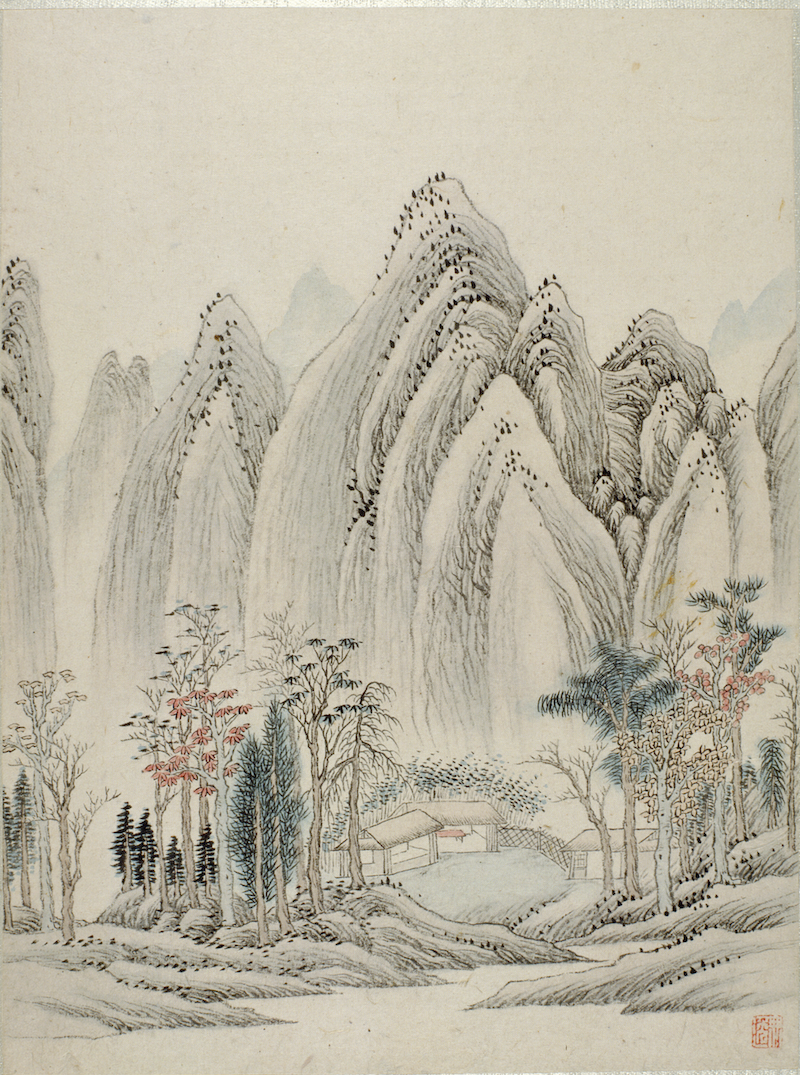
Figure 2-2 1639 Qiu Sunyi Landscape Album Collection of the Palace Museum
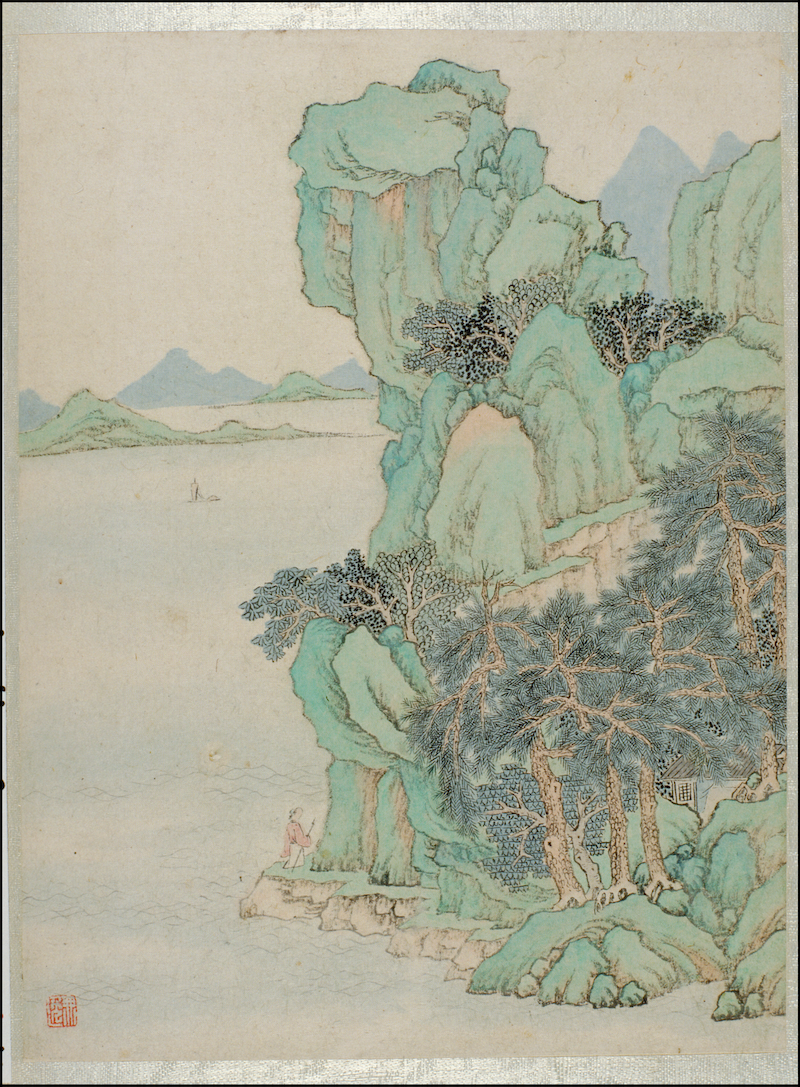
Figure 2-3 1639 Qiu Sunyi Landscape Collection No. 10 Collection of the Palace Museum
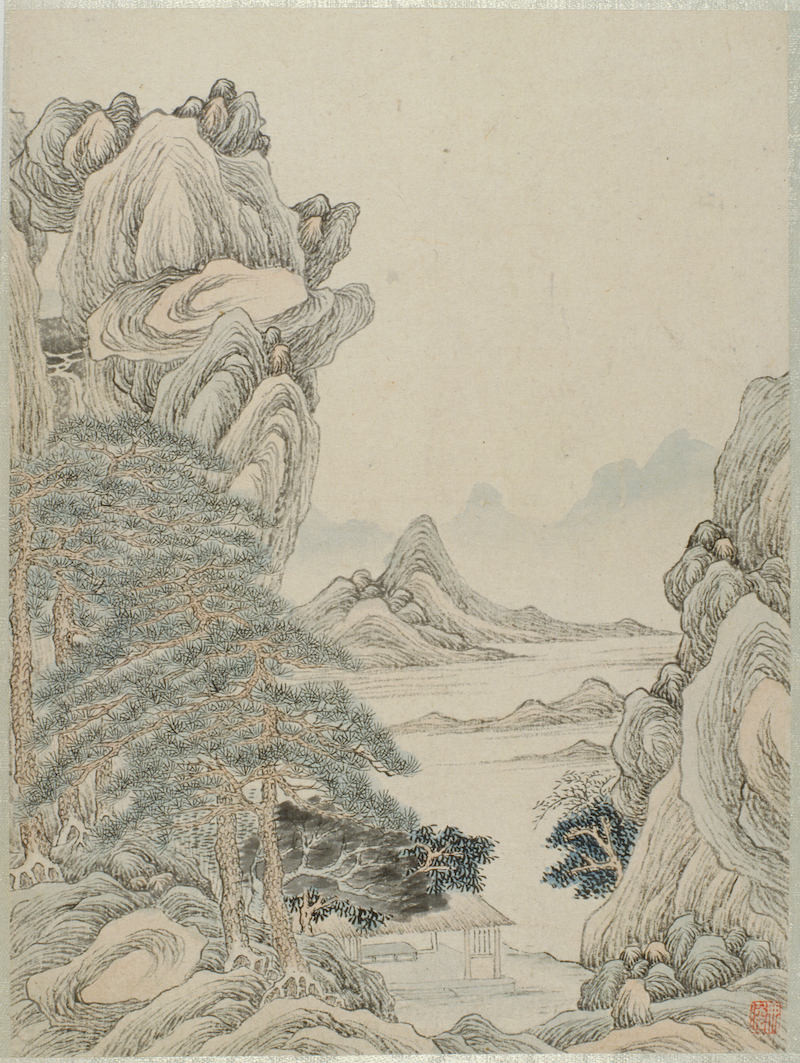
Figure 2-4 1639 Qiu Sunyi Landscape Collection No. 10 Collection of the Palace Museum

Figure 2-5 1639 Qiu Sunyi Landscape Collection No. 10 Collection of the Palace Museum
In the early winter of Wuyin (1638), the eleventh year of Chongzhen, Cheng Sui (1607-1692) saw the "Huangshan Picture" by Sun Yi. He admired it for "the heartfelt feeling", so he "painted it on old paper". It was not until September of the next year that Sun Yi, who claimed to be "lazy" by nature, "just completed the pamphlet at the age of Zha". He humbly said that "his strength was not as strong as that of Song and Yuan Dynasties, and he felt that his fresh energy had not yet been exhausted." There are sixteen frames in this album (collected by the Palace Museum). Each frame has a different painting method, which is quite thoughtful. It is mainly based on the paintings of the Yuan and Ming Dynasties and traces back to the legacy of the Song Dynasty (Figure 2-2, Figure 2-3, Figure 2- 4. Figure 2-5). As for Cheng Sui's "Walking Alone in the Autumn Mountains" (now in the collection of Anhui Museum), the inscription is "written as Shulin Taoist Brother Bo Xiao", which is also a trace of the relationship between the two. And depending on the meaning, Cheng Sui was a few years older than that. In addition, it is generally believed that Sun Yi was born no later than Jianjiang. For example, in the "Gangling Tu" volume collected by the five Xin'an families in the Shanghai Museum, Sun Yi is ranked before Jianjiang. Therefore, we might as well speculate that Sun was born between Cheng Sui and Jian Jiang, that is, he was born slightly before 1610. From this, it is believed that Sun Yi was about fifty years old when he died.

Figure 3 Part of the "Gangling Map" collaborated by Sun Yi and others from the collection of the Shanghai Museum
As mentioned above, during the same period when he painted the landscape album for Cheng Sui, in the late spring of Ji Mao (1639), the twelfth year of Chongzhen, Sun Yi had a first meeting with Li Yongchang and Jiang Tao (i.e. Jianjiang) who were "brothers in society" Li Shengbai forty years. Cooperate with "Gangling Picture Scroll". Among them, a section painted by Sun has skillful brushwork, clear outlines, and fresh breath. It has the typical painting style of Wen Zhengming of the Wu family (Figure 3, collected by the Shanghai Museum), and is similar to the aforementioned frame in the landscape album collected by the Palace Museum (Figure 2-2 ) painting methods are also similar. Moreover, it can be seen from this that Sun Yi, as an important member of the "Tiandu Sect", is as popular as Jian Jiang at this time.

Figure 4 Jian Jiang's "Gaotong Youhe" Collection of Anhui Museum
The relationship between Sun Yi and Jianjiang and others is not limited to the "Gangling Picture Scroll". He once wrote a poem on a picture of "Gaotong Youxiao" written by Jianjiang monk for Zha Shibiao: "Wenshi Yanyan Cuizhu New , A tree of autumn tung trees is right next to it. At the foot of Jiulong Mountain, Wang Gaoshi, a master's pen can distinguish a section of spirit." (Picture 4, collected by Anhui Museum) This work is naturally a sign of the friendship between Sun Yi, Jian Jiang and Zha Shibiao. clear evidence. It can be seen that during his lifetime, Sun Yi's paintings and poems were widely recognized by friends and he was famous for his success.

Figure 5 1643 Sun Yi's "Reading in the Pine House" Collection of the Palace Museum
In the autumn of Guiwei (1643), the 16th year of Chongzhen, Sun Yi painted a landscape axis for "brother Yizhen Ci", which has been passed down to this day. The two copies collected by the National Palace Museum (Picture 5) and the National Museum of Korea (Picture 6) are very similar, and there should be some distinction between genuine and fake. The latter's writing and ink are weak, as is the style and title.
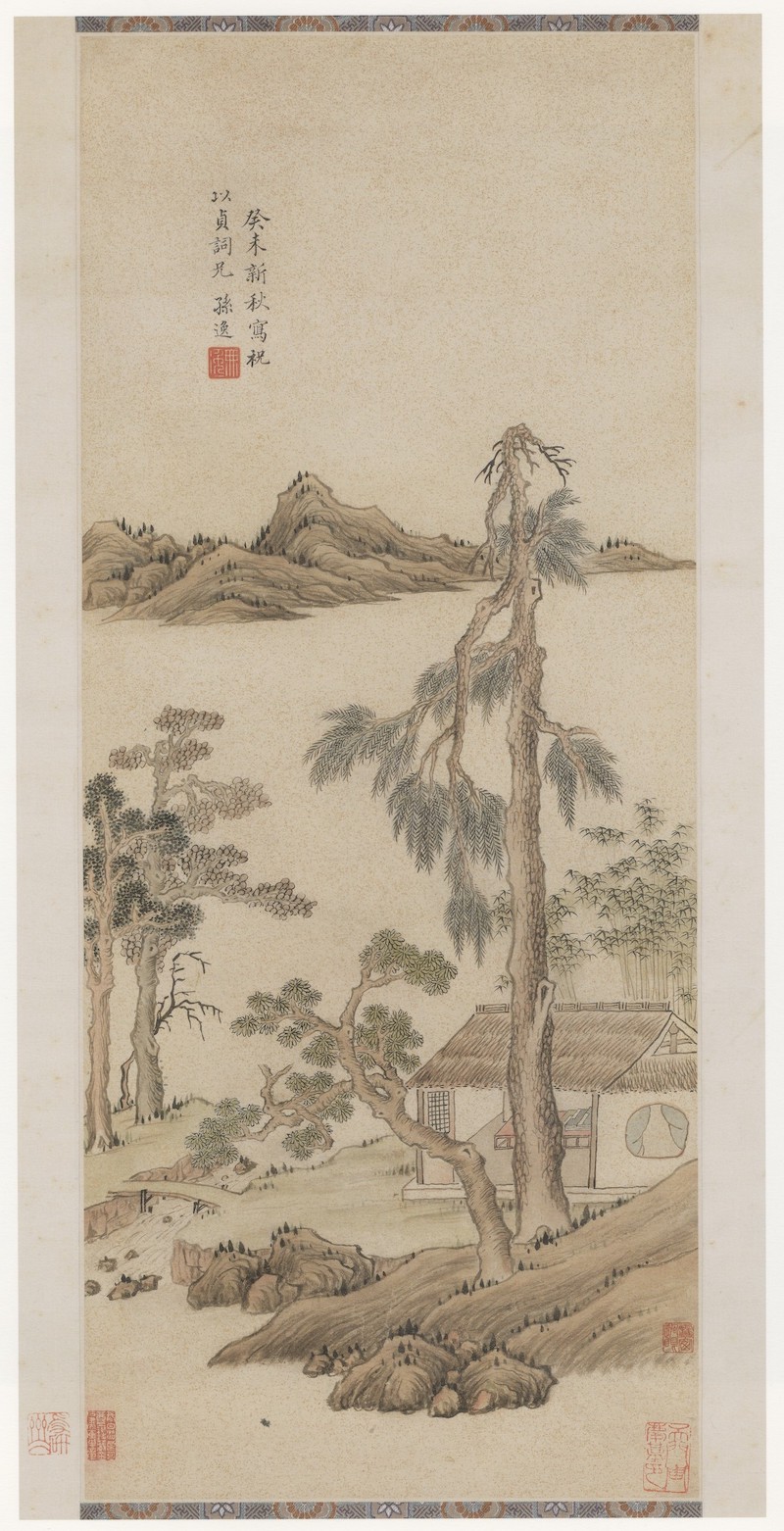
Figure 6 Sun Yi's "Reading in Songwu" Collection of the National Museum of Korea
During the six or seven years of the late Ming Dynasty and the early Qing Dynasty, Sun Yi's whereabouts were hard to find and remained obscure. On the seventh day of the first lunar month of the seventh year of Shunzhi (1650), Fang Wen (1612-1669, No. 1669) visited Sun Yizhaitou and presented him with a poem. His poem goes like this: "There is a thatched cottage in the alley, and in early spring guests stay to watch the sunshine. Wine is like bamboo leaves that are greener in the cold, and people are like plum blossoms that become more fragrant when they get older. The paintings are hidden in thousands of layers on the island, and the words of the poem "Ladle" carry the wind and frost. Since the beginning of time, there have been few people in the mountains. , The character is as rich as the king and the flying geese." It can be seen that Fang highly praised Sun Yi's poems, paintings and even his character. Based on the sentence "People are like plum blossoms, they become more fragrant as they grow older". It can be inferred that Sun Yi was not only older than Fang, but also gradually entering the old age at that time. On the Tianzhong Festival (i.e. Dragon Boat Festival) of that year, Sun Yi painted a landscape frame for "Tianyu President Brother" in the style of Ni Yunlin. (Picture 7, in the "Huilin Collection" collected by the Shanghai Museum) According to Zhao Jishi (1628-1706), a native of Xiuning, his courtesy name was Tianyu and Hengfu. The year of his birth and death can be inferred from Zhu Yizun's "Epitaph of Zhaojun Xue Zhengzhao, the official of the court ceremony, Hu Kegei Shi Zhongxianbu Guozi Supervisor". The Zhao family was active in Wenlin at that time, and may be the same person as the "Brother of Tianyu Club" here.
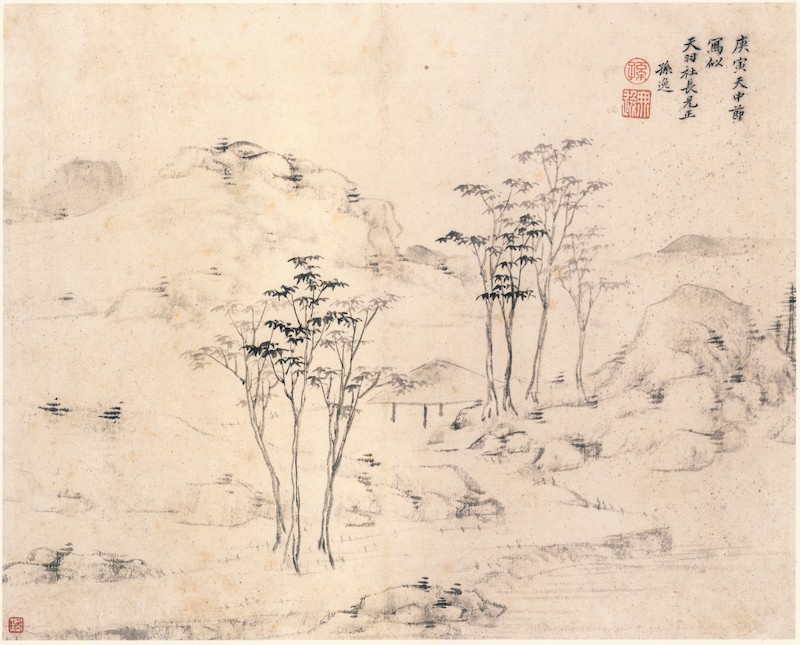
Figure 7 Sun Yi’s landscape page ("Collection of Paintings and Forests") collected by Shanghai Museum
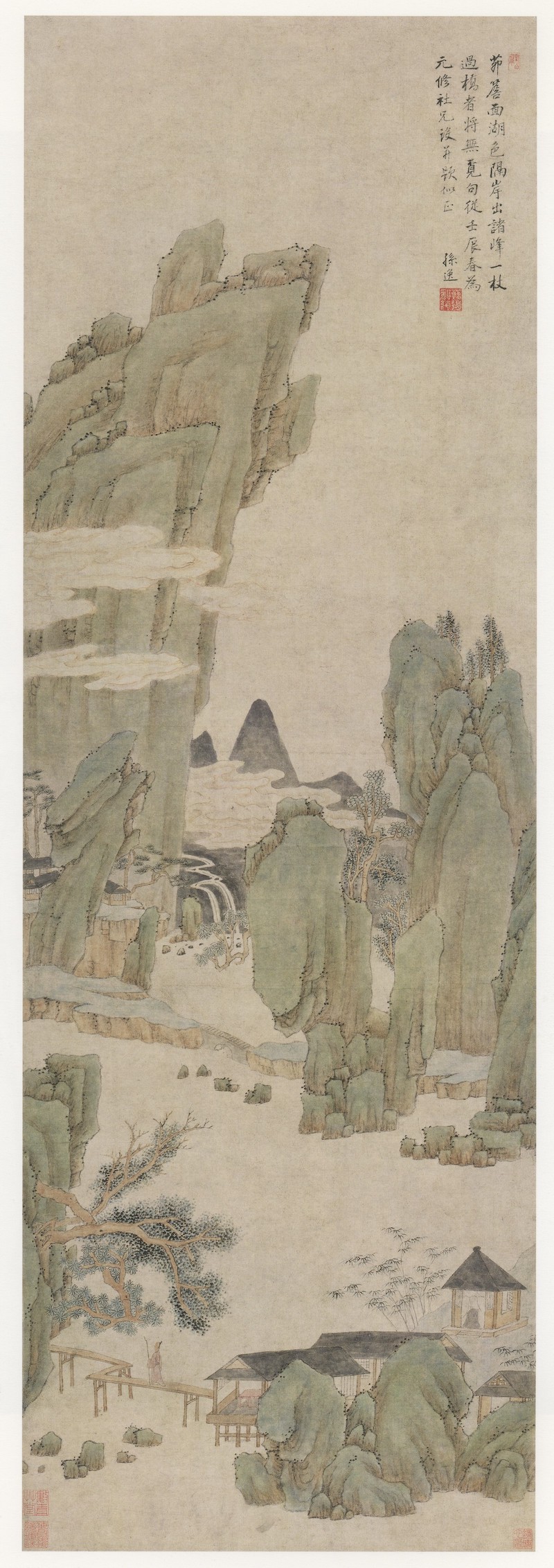
Figure 8 Sun Yi's "Searching for Sentences on the Creek Bridge" collected by Anhui Museum
In the spring of Renchen (1652), the ninth year of Shunzhi, Sun Yi painted "Searching for Sentences on the Creek Bridge" (Picture 8, collected by Anhui Museum) for "Brother Yuan Xiushe". The picture is neat and elegant, with spring water and green trees, mountains, thatched pavilions and houses, small bridges, streams and rocks, and Taoist monks chanting among them. The whole painting is made of small greens, which are elegant and lofty. There are clouds rising from the mountainside. It is transparent and ethereal, like a fairyland, making people feel like they have left the world. The style of painting is close to that of Wen Zhengming's typical works. Among them, the thatched pavilion seems to be tilted, which is also seen in Wen's scrolls. This work has clear pen and ink, beautiful colors, combined with workmanship and writing, and contains the uniqueness of An. It not only captures the essence of the Wu family's literary lineage, but also integrates the strengths of Huang Gongwang and Ni Yunlin. The various families in Xin'an are somewhat alienated, but this is an important masterpiece handed down from generation to generation. The title of the poem on the upper right: "The eaves face the color of the lake, and peaks emerge from the other side. Anyone who crosses the bridge with a stick will have no words to follow." The poetic and artistic meanings reflect each other. In addition, in the late Qing Dynasty, Lu Xinyuan's "Rangliguan Guoyan Xulu" recorded a set of album pages painted by Sun Yi in the early autumn of that year. Sun Yi wrote twelve frames of "Helin Jade Dew Book" by Tang Yin, one of the four Wumen families, for his friend Lin Shenglin, who "has a natural relationship with latex". The last frame says: "In the early autumn of Renchen, Linzi Mr. Wei wrote and recorded the text above." Among them, the first postscript at the end of the volume is attributed to Sun Yi: "It is bright and smooth, with well-organized longitude and latitude. This is the writing of a sailor from Jialing Mountain. The famous modern master should be from the north." The postscripter also asked Lin. Keep it alive.
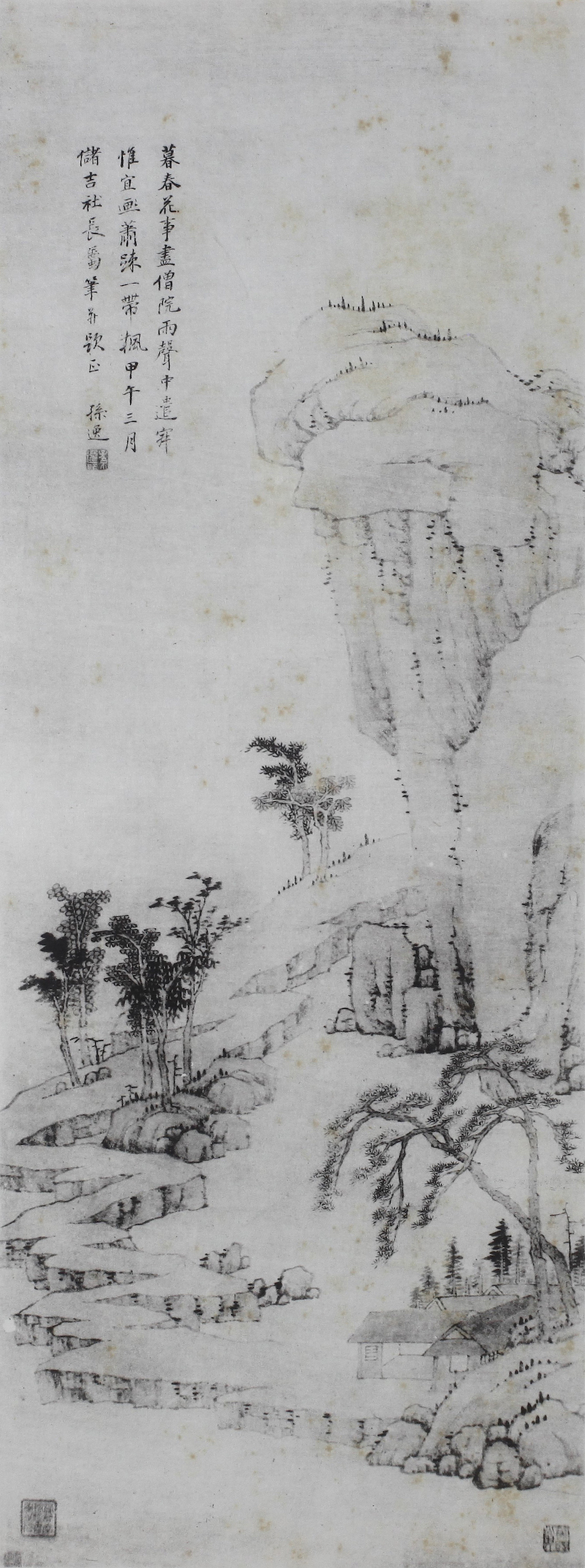
Figure 9 Sun Yi's "Late Spring Scenery", Huang Binhong's old collection
In the third month of Jiawu (1654), Sun Yi, who was affiliated with "President Chu Ji", painted a landscape frame and wrote a poem called "Wujue": "The flowers in late spring are gone, and the rain in the monastery is heard. It is best to paint to relieve the silence, and the maples are scattered all over the area." ( Figure 9) Compared with "Searching for Sentences on the Bridge over a River", this work is uniquely unrestrained, with sophisticated brushwork and a clear artistic conception. It was published in the third page of the 66th issue of "Inscriptions, Calligraphy and Painting" on September 30, 1936, under the title of "Landscapes of Sun Yi of the Qing Dynasty", and was marked as "Huang Shi Binhong of Tiandu". Hidden in the Thatched Cottage". It was later included in the collection of works of "Xin'an School of Painting" compiled by Wang Kongqi, a photocopy of the Chinese Culture Institute of Jinling University in the 37th year of the Republic of China (1948).
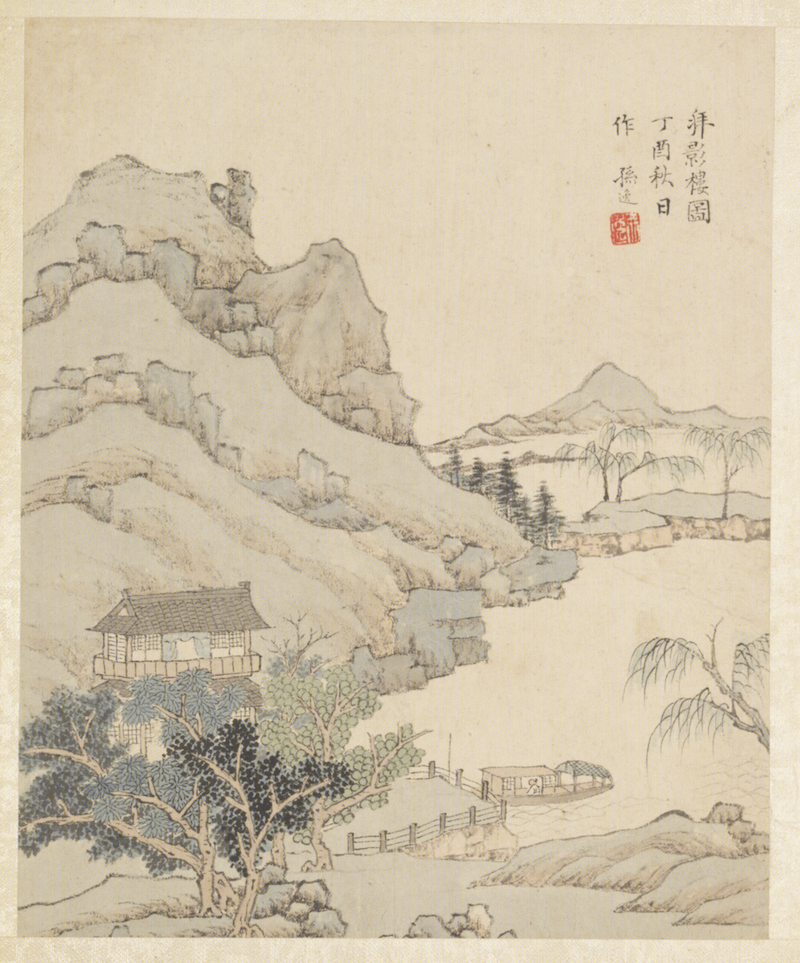
Figure 10 "Photography Studio Picture" by Qiu Sunyi, Ding You, 1657, collected by the Palace Museum

Figure 11 Sun Yi's "Cinnabar Peak" Collection of the University of Michigan Art Museum
Dingyou, the 14th year of Shunzhi (1657), was the year when Sun Yi had many works under his name. In spring, he once "imitated Huang Zijiu's method" and painted a landscape fan for "Mr. Shijie". In autumn, at the invitation of descendants of Zheng Chaozong (1598-1644), he painted "Photography Studio Picture" (Fig. 10, collected by the Palace Museum). Shi Erzhi, Xiao Chen, Hu Yukun, Fan Qi, Jiang Yuan, Gao Jian and others Draw one picture each. At the beginning of the winter of that year, Sun Yi wrote "Cinnabar Peak Picture" based on a description in the "Travel to Mount Lu" by Wang Siren (1575-1646, courtesy name Jizhong), a famous official in the late Ming Dynasty. He excerpted and wrote the title: "'Cinnabar Peak is like this. The fire color of Chicheng is soaring into the sky, and the mountains are green. To reach this peak is one of the few in Wugu Mountain. "A piece of Mr. Wang Jizhong's "Travel to Lu" was written for its meaning." (Figure 11, University of Michigan Art Museum Tibet) At this time, it had been eleven years since Wang died for his country. Sun Yi painted this picture with the title of a trip to Mount Lu, which has a meaning of reminiscence. In addition, Jin Yuan's "Shibaizhai Calligraphy and Painting Record" records a total of ten frames in "Sun Yi's Landscape Album", of which only the tenth frame has an inscription: "Ding You Qiuqi, imitating Minangong's brushwork. Sun Yi." If Jin's If it is recorded as an authentic work, we can know that Sun Yi also took the landscape of Famijia in the autumn of the same year.
As mentioned above, Lu Xinyuan in the late Qing Dynasty once wrote "Sun Wuyi came to Tang Dynasty Liu Ru "Helin Jade Dew Book"". Later, there were inscriptions and postscripts by various authors, which clearly shows Sun's character and style at that time. Xiao Yuncong (1596-1673) believed: "I imitated the book of Jieyuan of the Tang Dynasty when I was young. It cannot be far away, and it completely loses the meaning of transcending the world beyond the world as mentioned by Zixi. There is no leisure and tranquility, which is ancient and Xiaonian. , was buried at the end of a noble family, so the ink is different from blue to blue." Xiao's humility and his admiration for Sun Yi seemed to provide some basis for the reputation of "Sun Xiao" in later generations. In addition, Zhou Lianggong, a famous scholar who was acquainted with Sun Yi, said: "When I was in Guangling, I once collected all the notes written by Wu Yi, and I knew that his family was peaceful and peaceful, and he was calm and content. He read dozens of volumes a day, and wrote about Yunshan. Send a message. I admire her selfishly, but I don’t care to look at my eyebrows... Touching this curly hair, it’s like seeing Wuyi’s mist. How can I say that it’s bright but not aware of Wuyi?” Tang Yansheng (1616-1692) who had friends with Sun Yi Year) postscript says: "I traveled to Mr. Cong Wuyi and saw his thatched cottage and grassy courtyard. There were only a few volumes of books and scrolls by Ni and Huang Xianzheng on the bedside. He lived a short life and did not use the desire for profit to interfere with his ambitions. He worked diligently and diligently, day and night, only knowing how to draw a scroll to entertain himself and paint freely. Therefore, the scale and size are enough to appreciate the wind and clouds and span the eternity." Various comments from people at the time or younger generations clearly show that Sun Yi was a noble person and devoted himself to painting. , contented.
Although the year of Sun Yi's birth is still unclear, the year of his death can be briefly discussed in this volume and postscript. Although Zhou Lianggong's first postscript has no chronology, it contains the phrase "More than ten years have passed, and Wu Yi has returned to Daoshan"; while Luo Shen's first postscript is directly related to the year of Sun Yi's death. On the second day of Tu month (December) of the 15th year of Shunzhi in the Qing Dynasty (1658), Luo Shi, who once lived next to Sun Yi, wrote: "No Yi, Yi people are also, transcending the dust and vulgarity... I went to live in Xiangyuan, Connected with the lintel of Yulu, sometimes sweeping the floor and burning incense, leaving rice grains to weed, and painting Zen paintings... There is no way to go now. I have a book of Si, remembering this person, and talking about Si, melancholy about the scene where a car passed by in the past and gave me abdominal pain." It can be seen that. By this time, Sun Yi had passed away. Based on the postscript written by Xiao Yun from this volume, Huang Binhong believed that "by the time of Shunzhi Wuxu, Xiao Chimu had inscribed a postscript, and Wuyi had passed away, and his era was no less than that of Jianjiang Monk." Of course, the above discussion must be based on the premise that the records recorded in this volume are authentic. As for the discrepancies between what Huang Binhong quoted in the article "Sun Shu Lin Yi" and Lu Xinyuan's description, the meaning is also quite different. Also, Huang's Zhongzhong says , "Zhang Gongxun wrote a painting as a gift to Wu Yi: 'In the fifth month of Guimao, the house is full of Tongyin, and the pen and ink are excellent. Wu Yi was asking for the remaining water in the ruined mountains, so he made this painting.' According to Guimao Dang The thirty-first year of Wanli in the Ming Dynasty" and so on. The author believes that Huang's statement is wrong. The thirty-first year of Wanli was 1603. However, Zhang Minggong (1618-1688) was not yet born at this time, so how could he inscribe the painting? If it were Guimao in the second year of Kangxi (1663), Wuyi had been dead for several years at this time, which is not very consistent.
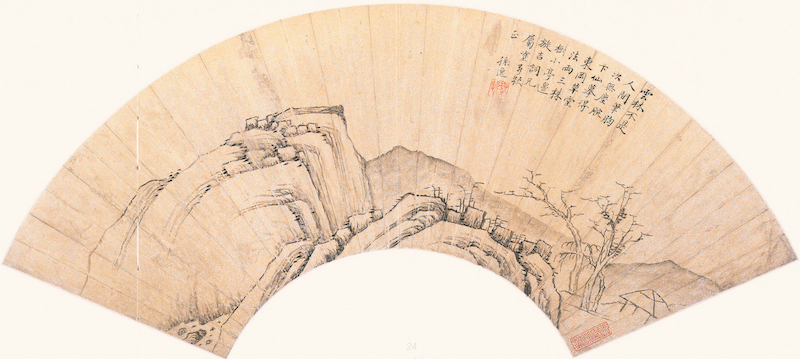
Figure 12 Sun Yi's "Three Trees in Donggang" Collection of Anhui Museum
Among Sun Yi's few handed down works, several imitate Ni Zan's painting style, which shows his profound influence. He wrote a poem for the fan painted by "Brother Xuanji Ci" and sighed for it: "Yunlin is not a human pen, and his breasts are dust-free and his wrists are immortal. I copied the Donggang thatched cottage method, with two or three trees beside the small pavilion." (Figure 12, collected by Anhui Museum) In addition, there is a record in "Shibaizhai Calligraphy and Painting Record" indicating that Sun Yi once visited Huang Zijiu's "Nine Peaks and Snow Mountains" and "directly wanted to seize the blue". This may show that his copy was quite extraordinary and won great popularity. The true face of infatuation. Careful imitation of Ni and Huang is the main way of learning for painters in Xin'an, and Sun Yi is no exception.
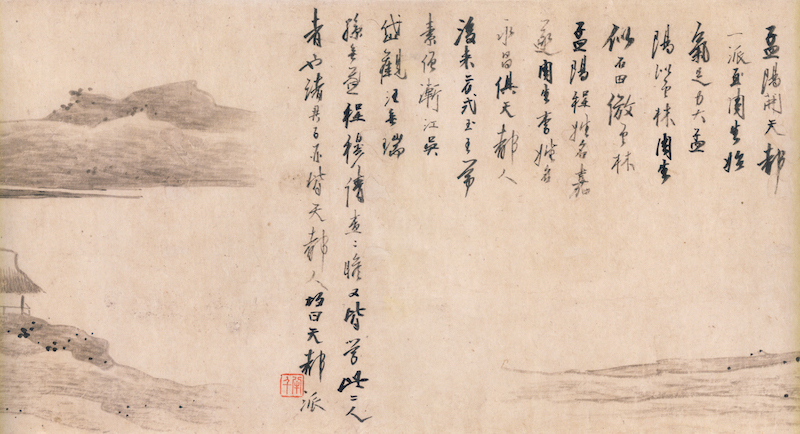
Figure 13 Part of Gong Xian’s self-titled "Landscape Scroll" collected by the Harvard University Art Museum
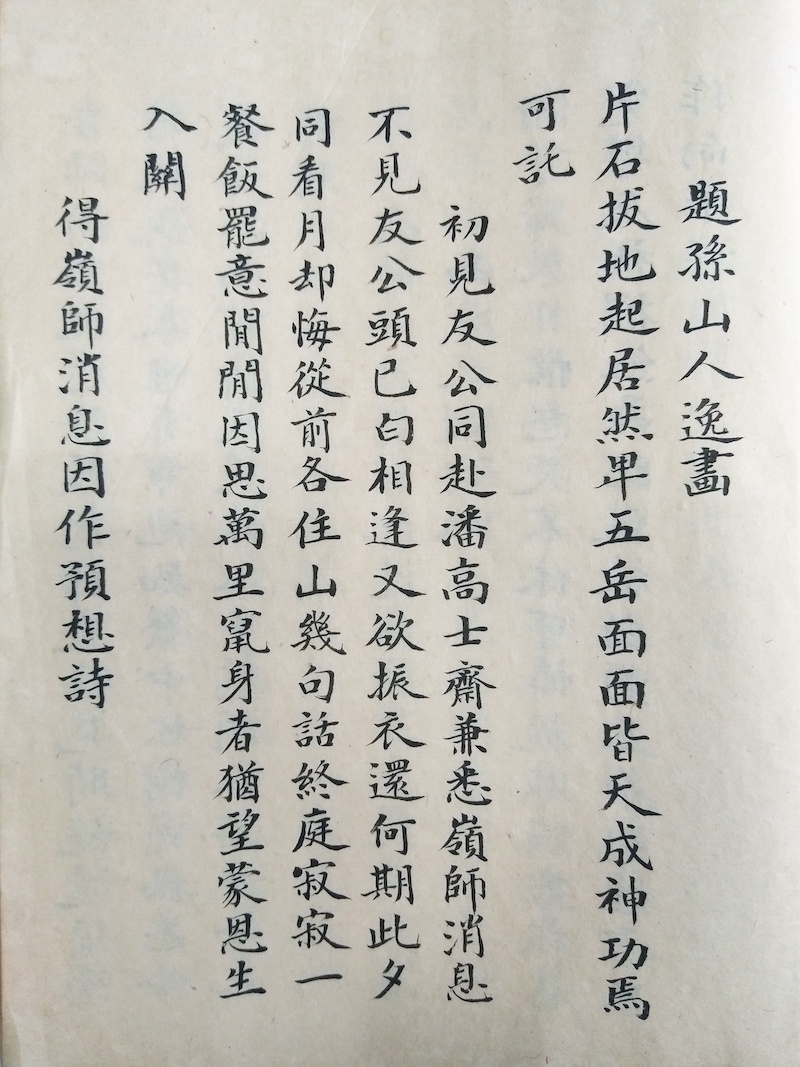
Figure 14 Copy of Gong Xian's "Cao Xiang Tang Ji" collected by Zhejiang Provincial Museum
Around 1665, Gong Xian discussed the "Tiandu School" when he was writing paintings, and Sun Yi was among them. It's just that Gong made a mistake in this title, writing it as Sun Wuyi, which seems to be the only one seen. (Picture 13, collected by the Harvard University Art Museum) Gong Xian also has a painting titled "Inscribed on Sun Shan Ren Yi": "A piece of stone rises from the ground, and it is actually inferior to the five mountains. The appearance is all made by nature, and there is no way to trust Sun Yi." (Picture 14) He was very fond of Sun Yi. For the sake of admiration, we can also get a glimpse of it from this poem.
In the middle and late Kangxi period, Feng Xianshi, Mao Dalun and others believed in the "Continued Compilation of Tuhua Baojian" that "Sun Yi, whose courtesy name is Wuyi, was born in Haiyang, Huizhou. He lived in Wuhu and was as famous as Xiao Chimu. The mountains and rivers are all good for his son." The mantle, leisurely elegance and smoothness are natural and natural. His temperament is calm and indifferent, and he is known as the elder." It is pointed out that his painting style mainly owes to Huang Gongwang. However, this statement was quickly "corrected". Zhang Geng gave a brief description in his "Guochao Painting Collection". He combined Xiao Yuncong and Sun Yi into one. It says: "Sun Yi, whose courtesy name is Wuyi and whose name is Shulin, is from Haiyang. He lives in Wuhu and learns about mountains and rivers from all the northern and southern sects. He is considered to be the successor of the imperial edict. He ordered Jin to carve "Sheshan 20 "Four Pictures" is his style of painting. In the past, together with Zha Shibiao, Wang Zhirui, and Shi Jianjiang, they were called the Four Masters, and later they were called "Sun Xiao"." He believes that Sun Yi's painting methods come from rich sources and draw from the strengths of others. The Sun family was collectively known as the Four Great Masters together with the Jianjiang family; later it was collectively known as the "Sun Xiao" together with the famous Wuhu painter Xiao Yuncong. There is no doubt that Sun Yi's paintings were among the best at that time.
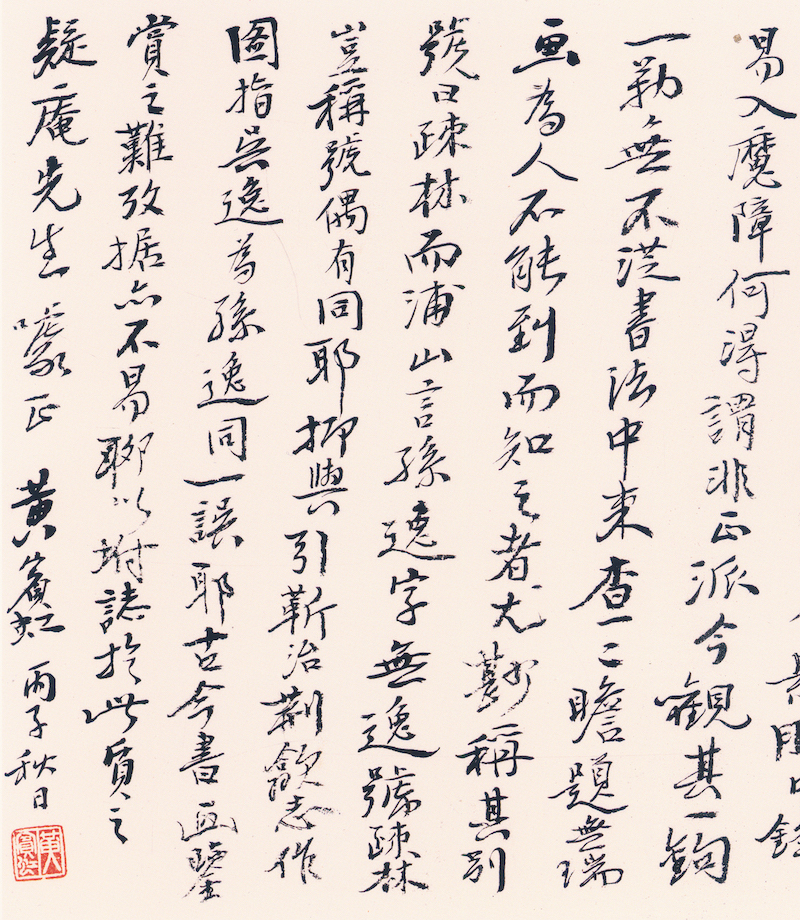
Figure 15 Part of two frames of Huang Binhong’s postscript and Wang Zhirui’s landscape collected by Anhui Museum
However, Zhang Geng's statement that "The Twenty-Four Pictures of She Mountain carved by She Ling Jin was his pen" was not recognized by Feng Jinbo, Peng Yuncan and others later. They quoted Zhang Geng's "Guo Dynasty Painting Symbols" This statement was deleted when recording. In fact, since Qianlong's "She County Chronicles", Kangxi County Chronicles have been recorded as "the draftsman Wu Yi", which is unmistakable. Unfortunately, the "Huizhou Prefecture Chronicles" and "Xiuning County Chronicles" published in the Daoguang period and the "Yangzhou Painting Garden Records" published in the Guangxu period generally recorded what Zhang Geng said, and gradually fell into a more chaotic situation. As late as the autumn of 1936, Huang Binhong pointed out in the postscript of Wang Zhirui's landscape painting that Wu Yi was mistaken for Sun Yi, directly denying Zhang Gengzhi's theory. He also mentioned that Zha Shibiao once called Wang Wurui's nickname Shulin, and he wrote: "Zha Erzhan's paintings titled Wurui are inaccessible to people, and those who know them are especially those who know them. He called Wang Wurui's nickname Shulin; and Pushan said Sun Yi The courtesy name is Wu Yi, and the nickname is Shu Lin. How can the title be the same? It is the same mistake as quoting Jin Zhijing's "She Zhi" to refer to Wu Yi as Sun Yi!" Huang finally lamented: "It is difficult to appreciate ancient and modern calligraphy and painting. , textual research is not easy, so I am determined to do this." (Figure 15, collected by Anhui Museum) In 1939, Huang Binhong mentioned this matter again in the article "Fengxi Wu Family", he wrote: "Wu Yi painted the ancient She Mountains and Rivers map , prefaced by Cao Zhenji of Beihai, and postscripted by Wang Shishun of the same city. Jin Zhi, the governor of the city, wrote the records of Jing Zi, and later generations often mistook Wu Yi for Sun Yi. Ma Buchan, the governor of Daoguangzhong County, revised the government records, but he still made the mistake, and it has been down for two hundred years. , If you don’t correct it, you will miss the test.” About half a century later, Wang Shiqing also made an explanation of Zhang Geng’s mistake, roughly repeating Huang’s theory. Obviously, Wang has neither seen the relevant textual research literature on Huang Binhong, nor paid attention to the detailed changes in the writings of Feng and Peng. In recent years, some researchers have regarded Wang Shiqing's review as one of their typical research results, which is even more inappropriate. This public case that confused Sun Yi and Wu Yi, which lasted for nearly three hundred years, can be put to rest here.
For some reason, Sun Yi, a famous painter who was famous for his time, was not listed in the "Xiuning County Chronicle" and "Wuhu County Chronicle" during the Kangxi period. In addition to "She County Chronicles", the name of Sun Yi's paintings also occasionally appears in related poetry and writings after the mid-Qing Dynasty. For example, Weng Fanggang (1733-1818) wrote in the last sentence of "Two Poems on Xiao Chimu's "Snow Scenery" with Self-Inscribed Rhymes": "If you stop the clouds and Sun Yi School accurately, the god crossing the bridge will be watching with a scorpion." He noted Said: "Chimu and Sun Yi are both called 'Sun Xiao', and Sun's paintings have many articles on Hengshan methods." Huang Yue (also known as Huang Jian, 1750-1841) quoted from Zhang Geng's "Painting Friends" in his "Painting Friends Record" "Hua Zheng Lu", there is a saying that "the so-called Sun Wuyi was from Xiuning and lived in Wuhu". He also lamented in the postscript at the end of the volume of "Gangling Pictures" jointly produced by various artists, and had doubts in his mind: "Sun Wuyi is as famous as Xiao Chimu, so they are called 'Sun Xiao'. However, what you see is often not as good as it is, or there may be big differences." Is the work here?" (Picture 16) The author thinks that if Huang Yue had seen Sun's works "Searching for Sentences on the Bridge over a River", he would recommend them.
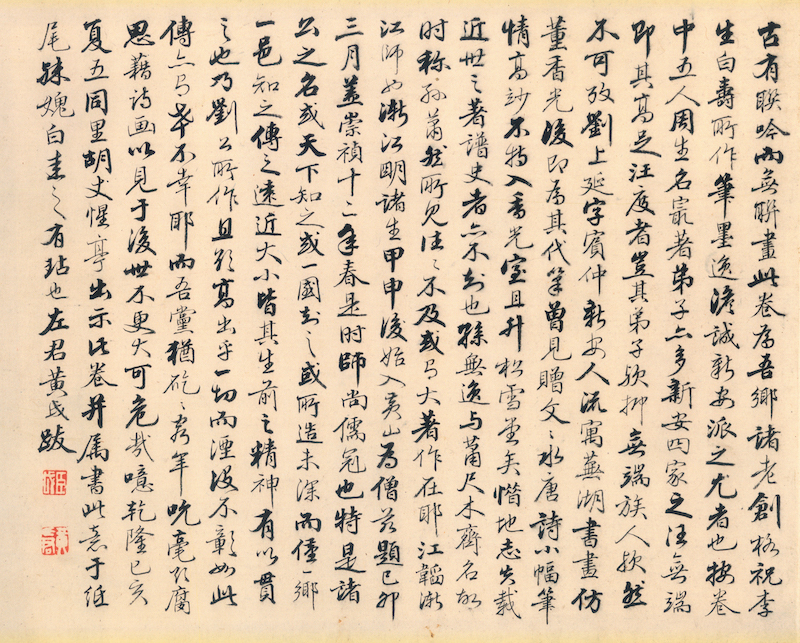
Figure 16 "Gangling Map" collaborated by Huang Junba, Sun Yi and others, collected by Shanghai Museum
By the end of the Qing Dynasty and the beginning of the Republic of China, Sun Yi was mentioned in some entries such as "Tongyin Theory on Painting", "Manuscript of Qing History" and "She County Chronicles". Huang Binhong not only collected Sun Yi's exquisite landscape works, but also mentioned them many times in related treatises. For example, "Binhong On Painting" in 1908; "Collections on Zilu Painting" from 1919 to 1921; "A Brief Discussion on Huangshan Painting Garden" in 1926, etc. Later, in his 1935 article "A Brief Introduction to the Xin'an School", he collectively referred to Sun Yi, Jian Jiang, Zha Shibiao, and Wang Zhirui as the "Four Great Masters of Xin'an". In 1939, Huang Binhong specially discussed it under the title "Sun Shu Lin Yi". He believed that "of the four great masters in Xin'an, Sun Yi is the rarest. Excellent works were circulated and were rare at that time." In 1948, "Xin'an" compiled by Wang Caibai "School of Painting" includes one of his landscape scrolls. In recent decades, Sun Yi has been selected into various catalogs or exhibitions as one of the important painters of the Xin'an School. However, there are very few relevant topic studies. Except for Wang Shiqing's article "Two Sparse Forests in Huangshan Painting Garden", there is almost no other special discussion. The main reason may be that there are few handed down works and related documents, making it difficult to get a glimpse of its true face. As Huang Binhong said, there are only a few surviving works under Sun Yi's name today. According to the author's preliminary review, in addition to those mentioned in the above article, there are still two or three others. For example, there is a frame of "Autumn Mountains and Flowery Streams" in the collection of Anhui Museum (Figure 17). On May 22, 1987, the appraisal team of ancient Chinese calligraphy and painting designated this work as "data"; the large vertical scroll of "Mountains and Pines Evergreen" in the Guangdong Provincial Museum collection (Figure 18), this is a damask edition, and there are notes indicating that it was rated as "authentic and fine" by the ancient calligraphy and painting appraisal group on December 3, 1988, or considered to be "fine in painting", with illustrated plates; it was later included in The "Complete Collection of Chinese Paintings" brings together fine works. However, these two works are quite far from Sun Yi's typical painting style that has been handed down from generation to generation. In particular, the latter's brushwork tends to be dry and hard, which is far from its elegance and beauty. The styles and seals are also different. The author thinks that the authenticity of the two works is quite different. Pseudo remains to be further examined. What is quite interesting is that the first item in the "Qing Dynasty 3" volume of the "Complete Collection of Chinese Paintings" is the "Gangling Picture Scroll" jointly produced by five Xin'an painters, including Li Yongchang and Jianjiang. The picture is uniformly marked "Li Yongchang, etc." words. The home page only selects a section painted by Sun Yi (Figure 3), which shows that the editor was also attracted by Sun's early painting style.
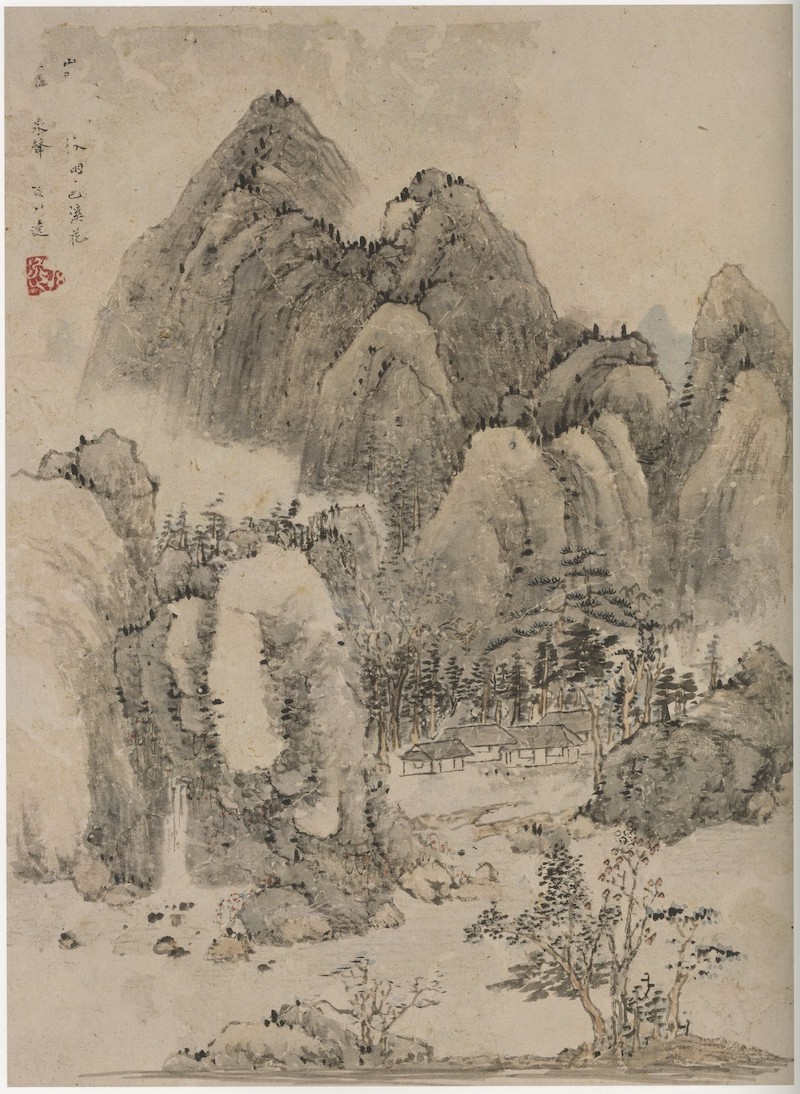
Figure 17 Sun Yi's "Autumn Mountains and Flower Streams" collected by Anhui Museum

Figure 18 "Mountains and Pines Evergreen" by Sun Yi, collected by Guangdong Provincial Museum
Just as Cheng Sui was greatly impressed when he saw Sun Yi's "Huangshan Picture" in the early winter of 1638, it is not difficult to infer that Sun's painting style had begun to take shape at this time. Not only is he one of the earliest painters in Xin'an to use Huangshan Mountain as his subject, but his aura of purity and elegance has already moved people's hearts. In the spring of 1639, Sun Yi painted a section of the landscape (Figure 3) in the "Gangling Picture" volume jointly produced by various schools in Xin'an. It clearly has the typical painting style of Wen Zhengming of the Wu family, and he is skillful and comfortable. It can be seen that he devoted himself to this style in his early years. , people call him the successor of Wen Daizhao, which is not a false reputation. Judging from the landscape albums painted and presented to Cheng Sui during this period, Sun Yi drew on the strengths of each family and was arrogant. In the autumn of 1643, he created a landscape scroll for "Brother Yizhen Ci", which also featured Ni and Huang, and his painting style was different from before. After that, he painted an album page for a friend during the Dragon Boat Festival in Gengyin (1650), which brought him closer to the lineage of Ni Yunlin, with an otherworldly atmosphere. Obviously, when he was in his thirties or forties, he had devoted himself to the Ni and Huang families for a long time, especially Ni Yunlin. This is also in line with the main approach and style of painters in Xin'an in the late Ming and early Qing dynasties. In the spring of 1652, Sun Yi carefully painted Xiao Qinglu's "Looking for Sentences on the Bridge" for a friend. It is his masterpiece handed down from generation to generation. The painting style is once again close to that of the Wumen Wen family, fresh, elegant and natural. In front of the original work, the author is particularly fascinated by it. In addition, some documents show that during this period, Sun Yi imitated the painting album of Tang Yin, another famous artist from the Wu family. People at the time praised it as "bright, smooth and delicate" and believed that "the famous artist in modern times should be from the north". After that, Sun Yi's painting style became more stable. For example, the vertical landscape scroll in the spring of 1654 is similar to the "Searching for Sentences on a Bridge over a River" two years ago. It can be seen that after repeated pursuits, Sun Yi had already formed a personal identity when he was in his forties. In 1657, Sun Yi, who was nearly fifty years old, left many works for the world, such as "Photography Studio Picture", "Cinnabar Peak Picture", and landscape fans that followed Huang Zijiu's example. These works basically represent his painting style in the last period, especially "Cinnabar Peak Picture" which is relatively similar to Jianjiang's style of the same period. From the spring of 1639, the two participated in the painting of "Gangling Map" together. Eighteen years later, they have reached the same goal through different paths. There is no doubt that Sun Yi started from the "Huangshan Pictures" in his early years, and finally established his own Xin'an painting style, making him one of the four major painters. Since then, no works of Sun Yi have been handed down to the world. In the past, it was believed that he died around 1658, and there are also documents to support it.
Sun Yi's seals of "Jianbaizhai" and "Guanyuan" undoubtedly reflect his personal indifferent mood in life. The poems given by his friend Fang Conshan, the inscriptions and postscripts by Xiao Yuncong and others, and the postscripts by Tang Yansheng, who had a teacher-student relationship with him, have created the image of Sun as a mountain man who adhered to elegance from different perspectives. In his poems, Sun Yi himself often expressed his feelings of desolateness and tranquility, such as "It is only suitable to paint to relieve loneliness, and the maples are scattered all over the place", which is also a self-portrait of him as a painter.
Due to Sun Yi's early death and the vicissitudes of time, his figure has become increasingly blurred. However, from the paintings handed down from ancient times and the writings of predecessors, we can still vaguely discern that his main learning style was Wen Zhengming, who directly followed the painting styles of Huang Zijiu and Ni Yunlin, and established his own style. People at that time may regard it as the successor of the imperial edict, but it should be regarded as a commentary. It should be said that people such as the earlier famous Xiuning artist Ding Yunpeng also studied the green landscapes of Fawen and Qiu Yiyi for a long time, and followed the trend, which shows the direct influence of Wumen painting style on painters in Xin'an at that time. As for the reinterpretation of the four paintings of the Yuan Dynasty, especially the painting style of Ni Huang, numerous famous artists emerged, which gave the latter the confidence to compete with other regions. (The author has a separate article for review) In other words, after the pursuit of several generations of painters in the late Ming Dynasty for nearly a hundred years, the Xin'an painting style was finally formed in the early Qing Dynasty, and Sun Yi's contribution was among them. From Gong Xian to Zhang Geng to Huang Binhong, Sun Yi was regarded as an important painter for about three hundred years. This left him with an important position in the history of painting, together with Jian Jiang, Zha Shibiao and Wang Zhirui, collectively known as the Four Masters of Haiyang or the Four Masters of Xin'an, and together with Xiao Yuncong, known as "Sun Xiao", and was sometimes referred to by later generations. Talk about it with relish. The author believes that for many famous artists of a generation like Sun Yi whose pasts are relatively ambiguous, through continuous tracing, I hope to generally present the true nature of their art, which may help to construct a relatively objective and credible history of painting. As for the process, it is naturally self-aware of gains and losses.
(Notes in this article omitted)